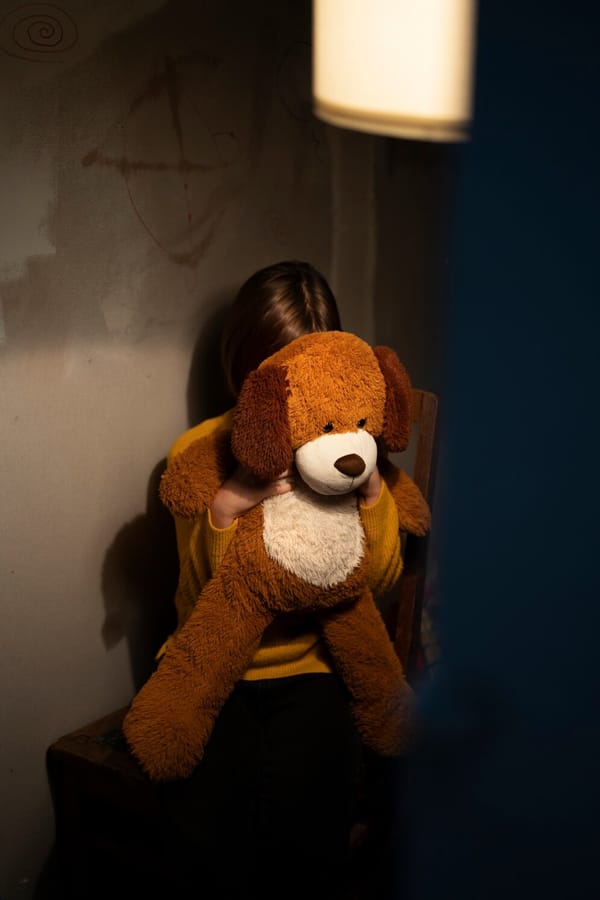Raising Awareness for Child Safety in Daycare: A Collective Responsibility for Parents, Staff, and Owners

Child safety in daycare centers is a critical concern for parents, caregivers, and daycare owners alike. In India, as more families rely on daycare services due to the growing number of working parents, ensuring that these centers provide a safe and nurturing environment for young children has become more important than ever. The well-being of children in daycare is not only a moral responsibility but a legal one as well. Unfortunately, child safety issues—ranging from accidents to inadequate supervision—are still prevalent in many daycare centers. This blog emphasizes the need for raising awareness among parents, daycare staff, and owners about the importance of child safety, highlighting the role each party plays in ensuring that daycare centers remain safe spaces for young children.
Why Child Safety in Daycare Matters
Daycare centers are more than just a place where children are supervised while their parents are at work; they are environments where children spend a significant portion of their day. This makes child safety a top priority. In these environments, children are exposed to various potential hazards, from physical injuries to emotional or psychological trauma. Ensuring child safety in daycare centers is crucial for preventing accidents, protecting children's mental and emotional well-being, and fostering a healthy developmental environment.
1. Raising Awareness Among Parents
Parents are the primary decision-makers when it comes to selecting a daycare for their children. Therefore, they must be educated about the importance of child safety standards and what to look for when choosing a daycare. Parents have the power to demand transparency and accountability from daycare centers.
Key Areas of Focus for Parents:
- Researching the Daycare’s Reputation and Safety Record: Parents should research daycare centers thoroughly, looking for reviews, feedback from other parents, and any reports on past incidents related to child safety. Checking with local authorities or regulatory bodies about the daycare's compliance with safety regulations is also essential.
- Ensuring Proper Licensing and Certifications: Parents should always ask if the daycare center is licensed by the relevant authorities. This ensures that the facility meets basic safety standards, including sanitation, child-to-caregiver ratios, and security measures.
- Safety Features to Look for: Parents should inspect the daycare facility to ensure it has childproofed areas, safe playgrounds, clean and well-maintained facilities, and proper emergency exits. They should also check that there are age-appropriate toys, fire safety equipment, and sanitary conditions.
- Open Communication: Parents should maintain open lines of communication with daycare staff about their child's well-being. Frequent check-ins can provide insight into how the daycare is handling child safety, supervision, and development.
By educating parents about these essential factors, we can encourage them to take an active role in safeguarding their child’s well-being while at daycare.
2. Raising Awareness Among Daycare Staff
Daycare staff are the frontline caregivers who directly interact with children every day. It is crucial that they are well-trained and aware of the best practices in child safety. Staff who are knowledgeable about safety protocols, child development, and emergency procedures can ensure a safer environment for children.
Key Areas of Focus for Staff:
- Training in Child Safety Protocols: Daycare staff should undergo comprehensive training in child safety, including first aid, CPR, and handling emergency situations. Training in age-appropriate care, fire drills, and evacuation procedures are essential for creating a safe environment for children.
- Understanding Child Development and Behavior: It is important for staff to be aware of developmental milestones and recognize when a child may be at risk due to health issues, emotional stress, or behavioral concerns. Caregivers should be able to provide individual attention when necessary and handle situations calmly and professionally.
- Proper Supervision: Daycare staff should always be alert and provide constant supervision to children, particularly in play areas or during naptime. Staff must be aware of the child-to-caregiver ratio to ensure every child receives the attention and care they deserve. Supervision also includes ensuring that children are never left alone in potentially dangerous situations.
- Promoting Emotional Well-being: Daycare staff must create a supportive, nurturing environment that helps children feel safe and secure. This includes fostering positive interactions among children and encouraging them to express themselves without fear of being judged.
Staff training should be an ongoing process, with periodic refresher courses to keep caregivers updated on best practices and new safety standards.
3. Raising Awareness Among Daycare Owners
Daycare owners are responsible for the day-to-day operations of the center, including maintaining a safe and secure environment for children. They must ensure that all aspects of the daycare center meet regulatory standards and that staff are equipped to deal with emergencies.
Key Areas of Focus for Daycare Owners:
- Setting Safety Standards: Owners must establish and enforce clear safety policies for the daycare center, ensuring compliance with both local and national regulations. These standards should cover all aspects of safety, from sanitation and health protocols to the safety of playground equipment.
- Staff Training and Development: Daycare owners are responsible for ensuring that all staff are properly trained and receive ongoing professional development. This includes training in first aid, child safety, conflict resolution, and the handling of special needs children. Properly trained staff will reduce the likelihood of accidents and improve the overall quality of care.
- Regular Safety Inspections and Audits: Daycare owners should conduct regular safety audits of their facilities, ensuring that everything from fire alarms to playground equipment is functioning correctly. This helps to identify potential hazards before they become problems. Conducting routine checks and safety drills will also ensure that both staff and children are prepared in the event of an emergency.
- Childproofing the Environment: Ensuring that the daycare facility is free of hazards, such as sharp edges, toxic materials, or unsecured furniture, is a key responsibility of daycare owners. The environment should be child-friendly, with clear safety guidelines in place for both indoor and outdoor play areas.
- Transparent Communication: Owners must foster open communication with parents about the daycare’s safety protocols. This includes informing parents about any incidents or accidents that occur, as well as providing updates on safety improvements and policies. Regular parent-teacher meetings can help maintain transparency and build trust between the daycare and parents.
4. Collaborative Approach for Improved Child Safety
The responsibility for child safety in daycare is not just limited to parents, staff, or owners individually but requires a collaborative approach. Ensuring that all parties—parents, daycare staff, and owners—are on the same page about safety practices and expectations is essential for creating a safe environment for children.
By promoting education, communication, and ongoing improvement in safety standards, the entire daycare ecosystem can work together to reduce risks and improve the overall safety of children. Awareness campaigns, safety workshops, and continuous feedback loops between parents, staff, and owners will contribute to fostering a culture of safety and care in daycare centers.
Conclusion
Child safety in daycare centers is a collective responsibility that requires the active participation of parents, staff, and owners. By raising awareness about safety protocols, child development, and emergency procedures, we can help create daycare environments where children are not only safe but also given the opportunity to thrive. With strong collaboration, proper training, and continuous vigilance, daycare centers can become spaces where parents feel confident and children can grow and learn without fear. Ensuring safety should always be a top priority, as it is the foundation upon which every child’s happiness and well-being depend.




